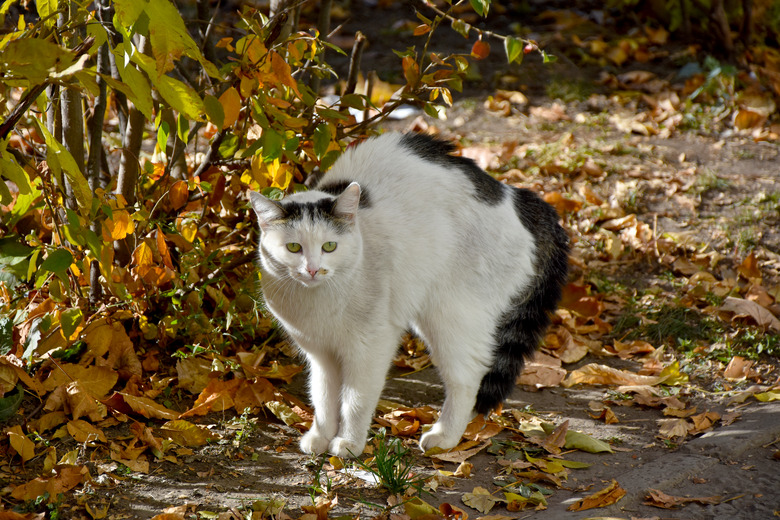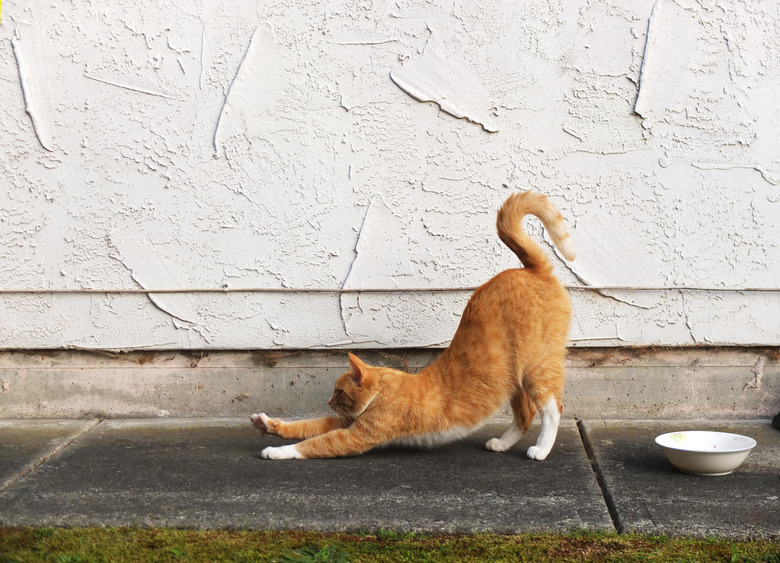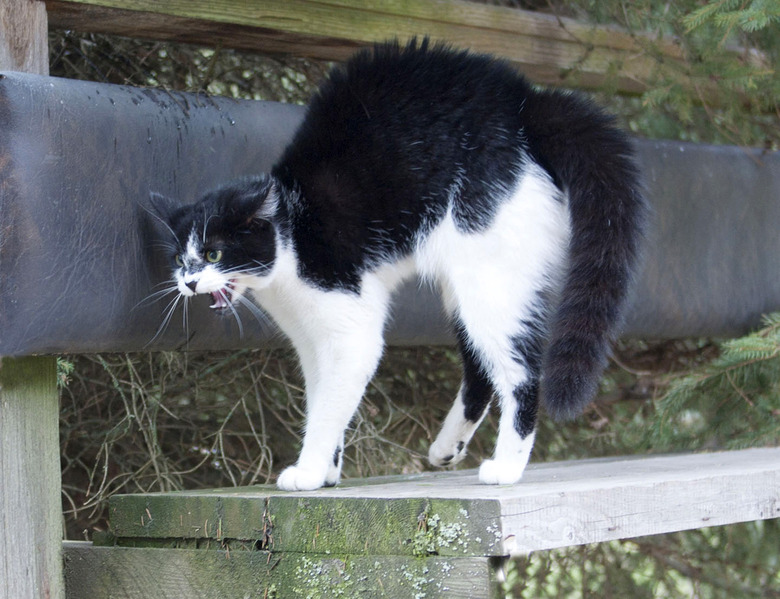What Does It Mean When A Cat Arches Their Back?
Whether you have a feline friend of your own or not, you're probably familiar with the image of a cat standing up high on what appears to be their tiptoes, with ears flattened, mouth wide open and hissing, and their back arched and bent like a wet noodle. This image is synonymous with Halloween and the superstitions that come with crossing paths with a black cat, but what does it really mean when you see a cat with his back arched? The answer to that question will depend on a number of additional factors, including their environment, mood, and the additional clues they're sending with their bodily language.
Cats and body language
Cats and body language
Cats certainly have the ability to use their voices to communicate, at least to a certain extent. Like many animals, however, cats rely more heavily on body language than a "spoken" language to get certain messages across to other cats, animals, and people. These clues are easily read by other cats, but may be confusing to say, dogs or people. To better understand your cat, attaining a basic understanding of what certain bodily movements mean can be valuable and will help you strengthen your bond, meet your cat's needs, and may even save you from a hiss or a scratch if you know what to look out for.
When attempting to read a cat's body language, there are two places to look that will help you get a good read, quickly: the head, and the tail. According the The Humane Society, a cat's ears and eyes can tell an entire story. Ears flattened back against her head generally indicate an agitated or defensive cat, as will constricted pupils, most of the time. Upward or forward facing ears, however, usually mean that a cat is relaxed and approachable. Similarly, a straight, upward-pointing tail means playtime is a definite possibility, while a tucked or thrashing tails is a good indicator to keep your distance.
Signs of a good arch
Signs of a good arch
In addition to a feline's front and rear ends, their bodies can tell us a lot about what they're thinking and feeling, particularly, their backs. Oftentimes, an arched back can mean nothing more than "I'm stretching" or "I want you to pet me here!" You may have noticed that some cats like being petted on their lower backs, near the base of their tails. While an affectionate scratch on the back almost always feels good, cats present their lower backs for scratching to mark you with their scent, which they distribute via pheromones located right in that region of their bodies. An arched back can also come about while play fighting, be that with you, a toy, or another cat, as pouncing and other "mock aggressive" behaviors tend to come out during playtime.
Arched backs as a warning
Arched backs as a warning
Understanding when an arched back is nothing to worry about is important and helpful in communicating with your cat, but recognizing when an arched back signifies a warning can possibly save you from an unwanted and uncomfortable encounter. When most people think of a cat with his back arched, it's often assumed that this feline is angry, feeling threatened, or just not wanting to be messed with at the moment. Arched backs accompanied with flattened ears, focused eyes, and a hiss or yowl are pretty much guarantees that any of those assumptions are true. According to the College of Veterinary Medicine at Cornell University, there are a variety to aggression types, including fear-induced, territorial, and redirected aggression. This is why you might see a cat with his back arched when backed into a corner, crossing paths with another cat, or if he's just heard a loud noise that startled him.
Additionally, an arched back may indicate that something is physically wrong with a cat, and pain-induced aggression may follow. Today's Veterinary Practice reported that often, cats in pain can be seen displaying an arched back, usually accompanied with squinted eyes, hair on the back standing straight on end, and whiskers resting back and flat along the face. When paired with an arched back, the aforementioned traits should always be read as a warning to stay away, as evidenced by a cat's attempt to make himself larger (back arched and hair sticking up) and therefore, more threatening.


